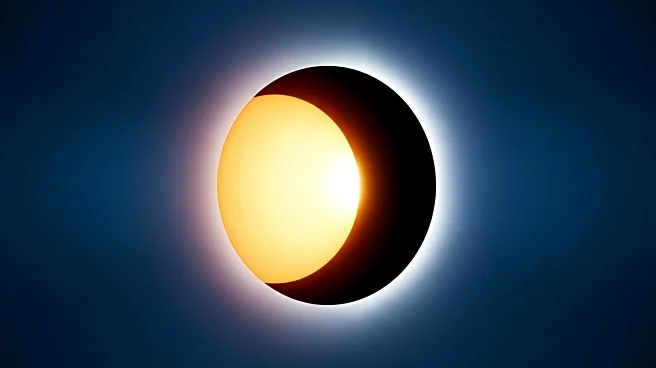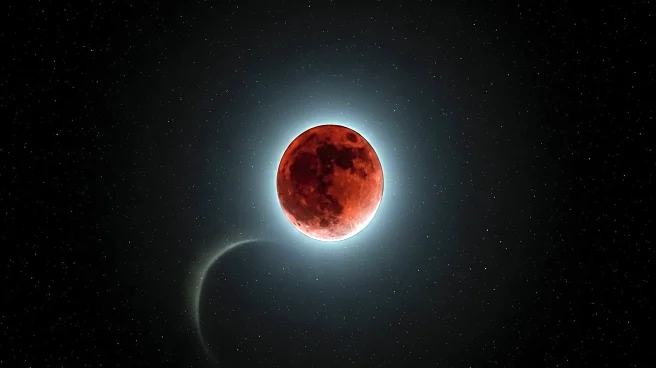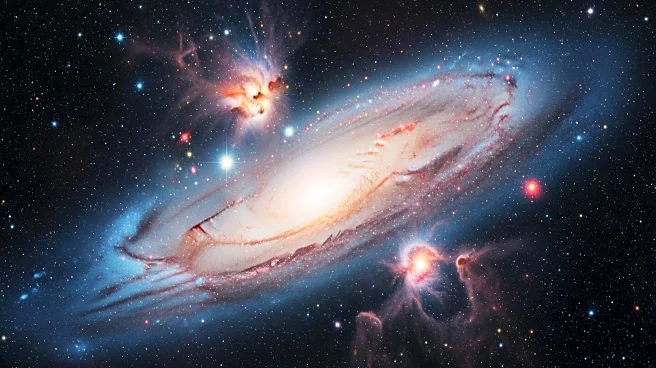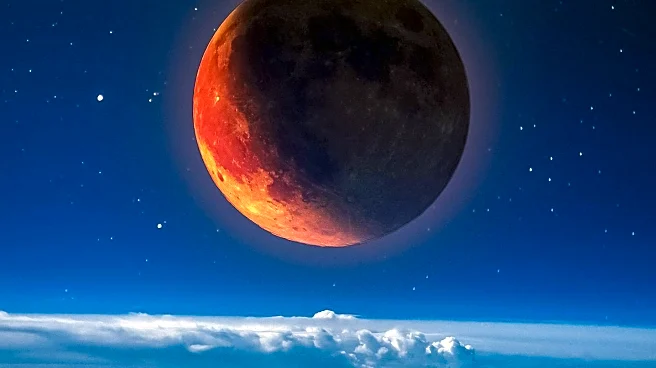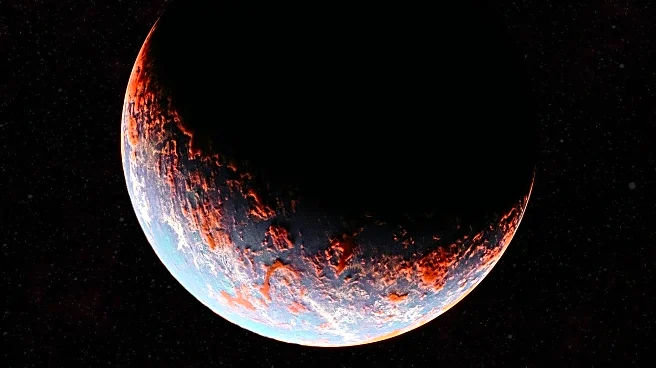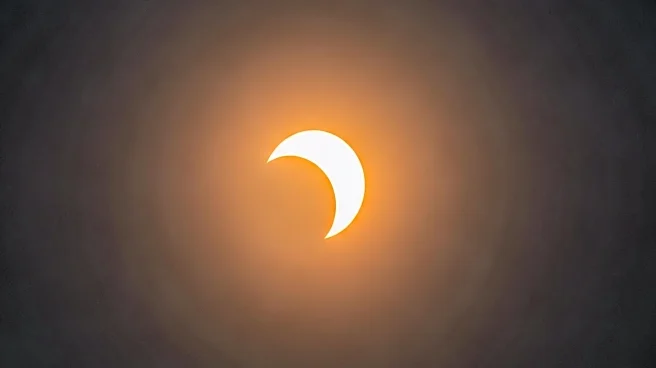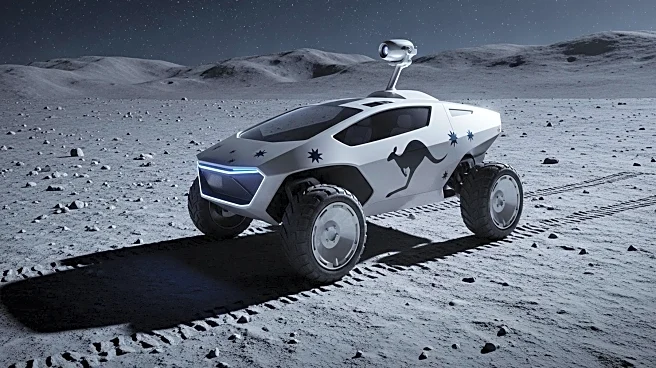What is the story about?
What's Happening?
A partial solar eclipse is set to occur on September 21, 2025, as confirmed by NASA. This celestial event, known as Surya Grahan in India, will not be visible in India but can be observed from regions including Australia, Antarctica, the Pacific Ocean, and the Atlantic Ocean. The eclipse will begin at approximately 17:30 UTC, reach its greatest visibility at around 19:43 UTC, and conclude by 21:54 UTC. The event will last for about 4 hours and 24 minutes. During a partial solar eclipse, the Moon covers only a part of the Sun, creating a unique viewing experience for those in the path of visibility.
Why It's Important?
Solar eclipses are significant astronomical events that attract attention from scientists, educators, and the general public. They provide opportunities for scientific study and public engagement in astronomy. For regions where the eclipse is visible, it offers a chance for educational programs and public viewing events, often accompanied by safety warnings about the need for proper eye protection. The event also highlights the global nature of astronomical phenomena, as different parts of the world experience varying degrees of visibility. While India will not witness this eclipse, the event underscores the importance of global scientific collaboration and public interest in space science.
What's Next?
For those in the visibility path, preparations for safe viewing are essential. This includes the use of eclipse glasses or solar filters to prevent eye damage. Educational institutions and observatories in the regions where the eclipse is visible may organize viewing events and educational programs. Additionally, online platforms may offer live streams of the eclipse, allowing a global audience to experience the event virtually. As the date approaches, more detailed local information and safety guidelines are expected to be disseminated by scientific and educational organizations.
Beyond the Headlines
The solar eclipse also presents an opportunity to discuss broader topics such as the importance of space science education and public engagement in scientific events. It can serve as a catalyst for discussions on the role of astronomy in understanding our universe and the need for continued investment in scientific research and education. Furthermore, the event may inspire interest in related fields such as astrophysics and space exploration, encouraging future generations to pursue careers in science and technology.
AI Generated Content
Do you find this article useful?
